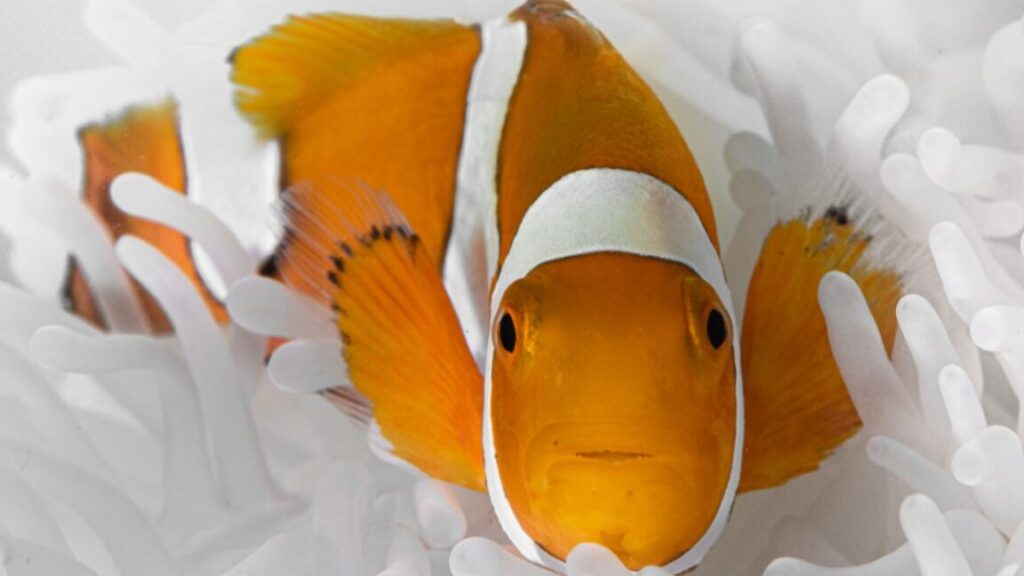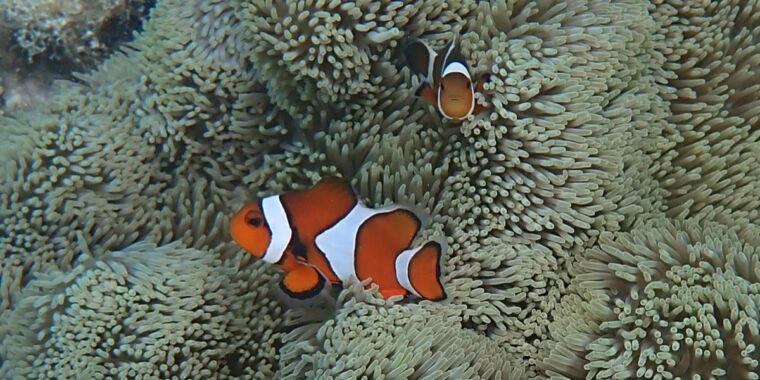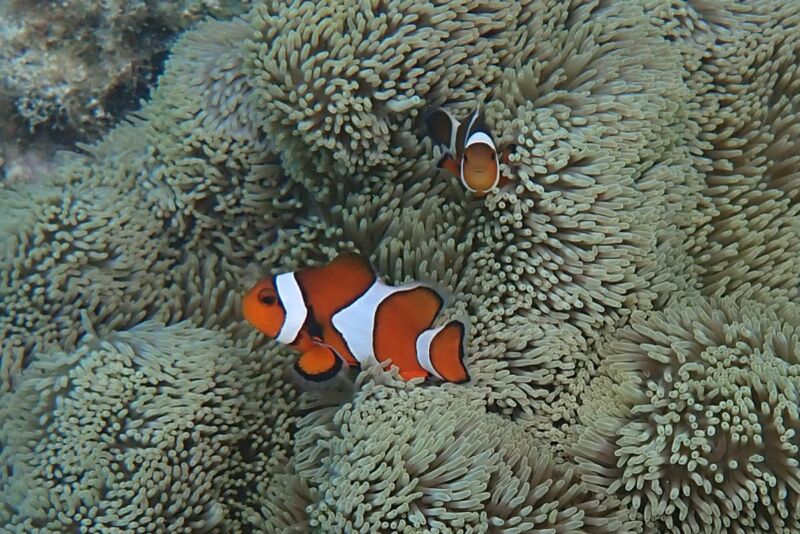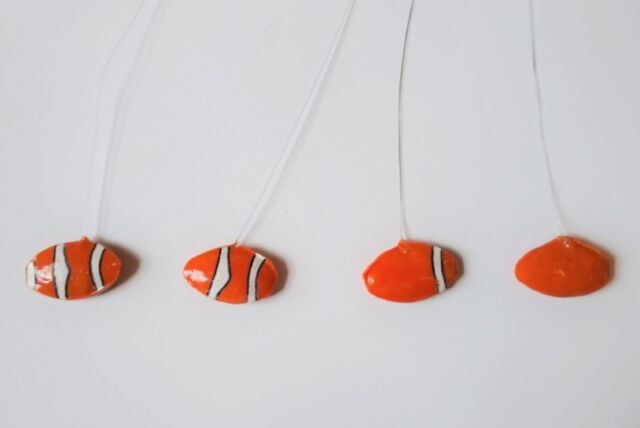Incredible shrinking clownfish beats the heat
Let’s get small
The team observed 67 breeding pairs of wild clownfish—briefly caught and photographed for distinctive markings and measured before being returned to the water—living on single anemones in Kimbe Bay, Papua New Guinea, between February and August 2023. This happened to coincide with the world’s fourth global bleaching event. They measured the body size of the fish once a month and measured the temperature around the individual anemones every four to six days. Then the team analyzed the collected data.
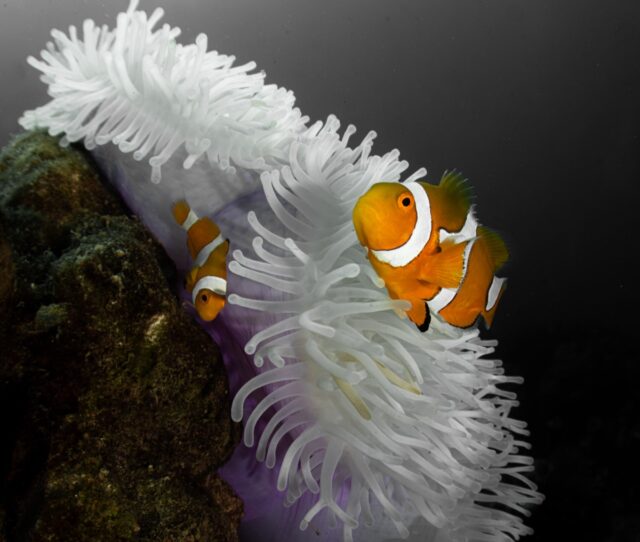
“Individual fish can shrink in response to heat stress.” Credit: Morgan Bennett-Smith
The results: Over the course of those months, 101 of the 134 clownfish shrank at least once in response to heat stress, and doing so boosted their likelihood of survival up to 78 percent compared to the 33 fish that did not shrink. And between breeding pairs, there were distinctive growth ratios between the dominant and subordinate fish; those pairs that shrank together were also more likely to survive the heat waves.
“We were so surprised to see shrinking in these fish that, to be sure, we measured each fish individual repeatedly over a period of five months,” said Versteeg. “In the end, we discovered it was very common in this population. It was a surprise to see how rapidly clownfish can adapt to a changing environment, and we witnessed how flexibly they regulated their size, as individuals and as breeding pairs, in response to heat stress as a successful technique to help them survive.”
Versteeg et al. have not yet identified a possible mechanism for the shrinkage, but suggest the triggering of neuroendocrine pathways via thyroid hormones might play a role, since those hormones regulate growth. The adaptive strategy could also be a means of adjusting to changing metabolic needs. But there are trade-offs: While shrinking in response to heat waves ensures greater survivability, there can also be a corresponding decrease in birth rates.
“Our findings show that individual fish can shrink in response to heat stress, which is further impacted by social conflict, and that shrinking can lead to improving their chances of survival,” said senior author Theresa Rueger, also of Newcastle University. “If individual shrinking were widespread and happening among different species of fish, it could provide a plausible alternative hypothesis for why the size of many fish species is declining, and further studies are needed in this area.”
Science Advances, 2025. DOI: 10.1126/sciadv.adt7079 (About DOIs).
Incredible shrinking clownfish beats the heat Read More »
